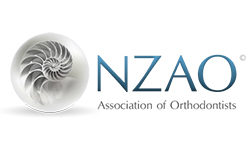
Invisalign
Keen to know what to expect with Invisalign?
Your first day in Invisalign
One of the most common questions we get asked about Invisalign is whether or not they hurt. But don’t worry, Invisalign treatment doesn’t hurt.
When they are first placed, most people experience minor discomfort for a few days at the beginning of each new stage of treatment. This is normal and is typically described as a feeling of pressure. It is a sign that the Invisalign aligners are working sequentially to move your teeth to their final destination. This discomfort, typically goes away after a couple of days.
Before leaving the practice
There are a few easy steps which we’ll ask you to complete before you leave your first appointment. Taking these steps helps ensure an optimal response to treatment, and keeps you feel prepared for your next visit.
- Check you have your aligners. Randal will give you a set of aligners to take with you to change each week between now and your next appointment.
- Make sure you understand how often to wear your aligners. Aligners should be worn all day, except when eating, brushing and flossing. Wear your Invisalign clear aligners 20 to 22 hours a day for best results. Parents, your teen’s aligners will have blue compliance indicators to assure you they’re wearing them enough.
- Book your next visit. Always schedule your next appointment before you leave the practice. Waiting a week or two after an appointment before scheduling your next office visit complicates our scheduling process, since appointments are programmed 4-6 weeks in advance. Postponing appointments is one of the main factors in longer treatment time.
Your first week in Invisalign
You may experience a little discomfort (but not pain) during the few couple of days of wearing your Invisalign aligners - just until you get used to them. You shouldn't need to change the foods that you're eating, but if you wanted to, for the first couple of days you could incorporate softer foods like yogurt, scrambled eggs, smoothies, puddings, seedless bread, boiled vegetables, pasta, or thin soups.
Additionally, over-the-counter pain medication works best and may be taken if you wanted to alleviate any discomfort.
Getting new sets of aligners
You'll wear each set of aligners for one week, as prescribed by Randal and you’ll schedule check-ups every eight weeks to check your progress. Fewer visits to see Randal means more time to enjoy life!
When wearing each new set of aligners, you may feel a little extra pressure or discomfort for the first few days, which is totally normal.
Alleviating discomfort
If you want, you can also take an over-the-counter pain medication to help.
Is it true I can only eat soft foods while wearing Invisalign?
No at all! Because you take your aligners out when you eat – it means you can keep eating all your favourite foods and you don’t have to worry about what you eat whilst having Invisalign treatment – cool hey?!
Not only that, you’ll even likely experience fewer emergency visits, without the hassle of brackets and wires breaking.
And most importantly, your Invisalign clear aligners are virtually invisible, so people may not even notice you’re wearing them!
Caring for your Invisalign aligners
Aligners are removable, so you can clean them to maintain oral hygiene. Just take your aligners out to eat and drink, then brush your teeth before putting them back in.
Rinse your aligners every night and brush them gently with your toothbrush to keep them fresh and clean. Use the Invisalign cleaning system to keep your aligners clear.
Choosing Invisalign means you can clean your teeth with ease compared to traditional braces. You can brush and floss as per usual for good oral health.
The run down: brushing with Invisalign
It’s really important your careful cleaning your teeth, because plaque bacteria are easily trapped inside and around them. The following procedure will make daily brushing and flossing both simple and effective.
- Brush your teeth: clean each tooth individually. First, place your brush at a 45-degree angle the gum line, then apply gentle pressure as you move in a circular motion. Do this for about 10 seconds. Use the same brushing action on all outer and inner tooth surfaces, tilting the brush as needed to better reach the insides of smaller front teeth. Make sure you brush your teeth for a totally of 2 minutes each time you brush.
- Floss at least once a day: Randal will show you the best way to floss, or just follow the instructions on the product package.
- Rinse and check your teeth. rinse thoroughly with water or even better with a mouth rinse, and don’t forget to examine your teeth in the mirror.
- Professional care: visit your dentist for regular check-ups once a year. This will help to ensure your teeth remain clean and healthy throughout your treatment.
Do I still have to visit the dentist while wearing Invisalign?
Yes absolutely! We recommend you continue to see your dentist for your regular check-ups once a year while receiving Invisalign treatment. This will help to ensure your teeth remain clean and healthy throughout your treatment.
Will wearing Invisalign affect my speech?
Like all orthodontic treatments, aligners may temporarily affect speech for some people and you may have a slight lisp for a day or two as you get used to the aligners. However, as your tongue gets used to having aligners in your mouth, any lisp or minor speech impediment caused by the aligners should disappear.
Will Invisalign affect my ability to play sport?
Not at all! With Invisalign treatment you can keep living your normal life!
You can keep eating all your favourite foods, stay active in all the sports and activites you love, and you’ll even likely experience fewer emergency visits, without the hassle of brackets and wires breaking.
Most importantly, your Invisalign clear aligners are virtually invisible, so people may not even notice you’re wearing them!
Invisalign tips and tricks
- Prepare a kit with a toothbrush, toothpaste, and floss (to use between meals), and lip balm (for dry lips). Carry this with you at all times.
- If you have a special occasion and you’re especially self-conscious of your aligners, don't be afraid to smile – people actually notice your mouth more when it's clear that you're trying to hide something. Plus, if you’re really worried you can just remove them for that event and put them back in when it’s done!
- If you are caught without a toothbrush, vigorously rinse your mouth with water (or mouthwash) and brush as soon as you are able to.
- Practice talking. Although few people will see your clear aligners, some might hear the difference in your speech when you first begin wearing them. Many patients speak with a small lisp initially, but it will vanish with a little practice.
- Carry a case. Always carry a case for your aligners because you’ll need to remove them to eat, and if you place them on a napkin or plate, you may accidentally throw them into the trash. Protect your aligners and your progress by carrying a case so you can stow your aligners safely whenever you take them out of your mouth.
- Keep your previous set of aligners. When undergoing treatment with clear aligners, you’ll generally wear one set of trays before transitioning to the next set. When you switch to a new set, hold onto your old one. If something happens and an aligner is lost or damaged, you can use the prior one to keep your teeth from moving in undesirable ways while you wait for a replacement.
- Use your retainer after you finish. To get the most out of your Invisalign treatment, you’ll need to main that new smile. Teeth have a pesky risk of shifting back after you’ve gone through the work of straightening them out. Wearing your Vivera retainer everyday at the end of your treatment is really important to make sure your teeth stay in their right position after treatment.
- If you are traveling for any length of time, make sure to pack the next set of aligners or have them shipped to you.
Braces are what most people think of when they think of orthodontic treatment and are one of our most common forms of treatment. Braces consist of small metal or ceramic brackets which are fitted to the front of your teeth with adhesive and have a wire running between them held in place by elastics.
Surgery is a less common form of orthodontic treatment, however it can be used in combination with other treatments to help treat more severe cases. Also known as Orthognathic surgery, adults with improper bites or other aesthetic concerns can undergo surgery by a specialist Oral Maxillofacial surgeon.
Kids and teens
Nothing lights up a room more than a child's smile! So, if you want to make sure your child has the confidence to smile, find out the right time to have an orthodontic consultation.
Adult treatment
Your smile is something you show off each day and something you should be really proud of! Orthodontic treatment is for everyone so if you'd like to smile with more confidence find out how here.
Randal is a member of the following:
References: 1. Van't Spijker, A, et al. “Occlusal Wear and Occlusal Condition in a Convenience Sample of Young Adults.” Journal of Dentistry, vol. 43, no. 1, Jan. 2015, pp. 72–77., doi:https://doi.org/10.1016/j.jdent.2014.11.001 2. Riolo, Michael L., et al. “Associations between Occlusal Characteristics and Signs and Symptoms of TMJ Dysfunction in Children and Young Adults.” American Journal of Orthodontics and Dentofacial Orthopedics, vol. 92, no. 6, 1987, pp. 467–477., doi:10.1016/0889-5406(87)90228-9 3. Current Therapy in Orthodontics, Nanda & Kapila, 2010





